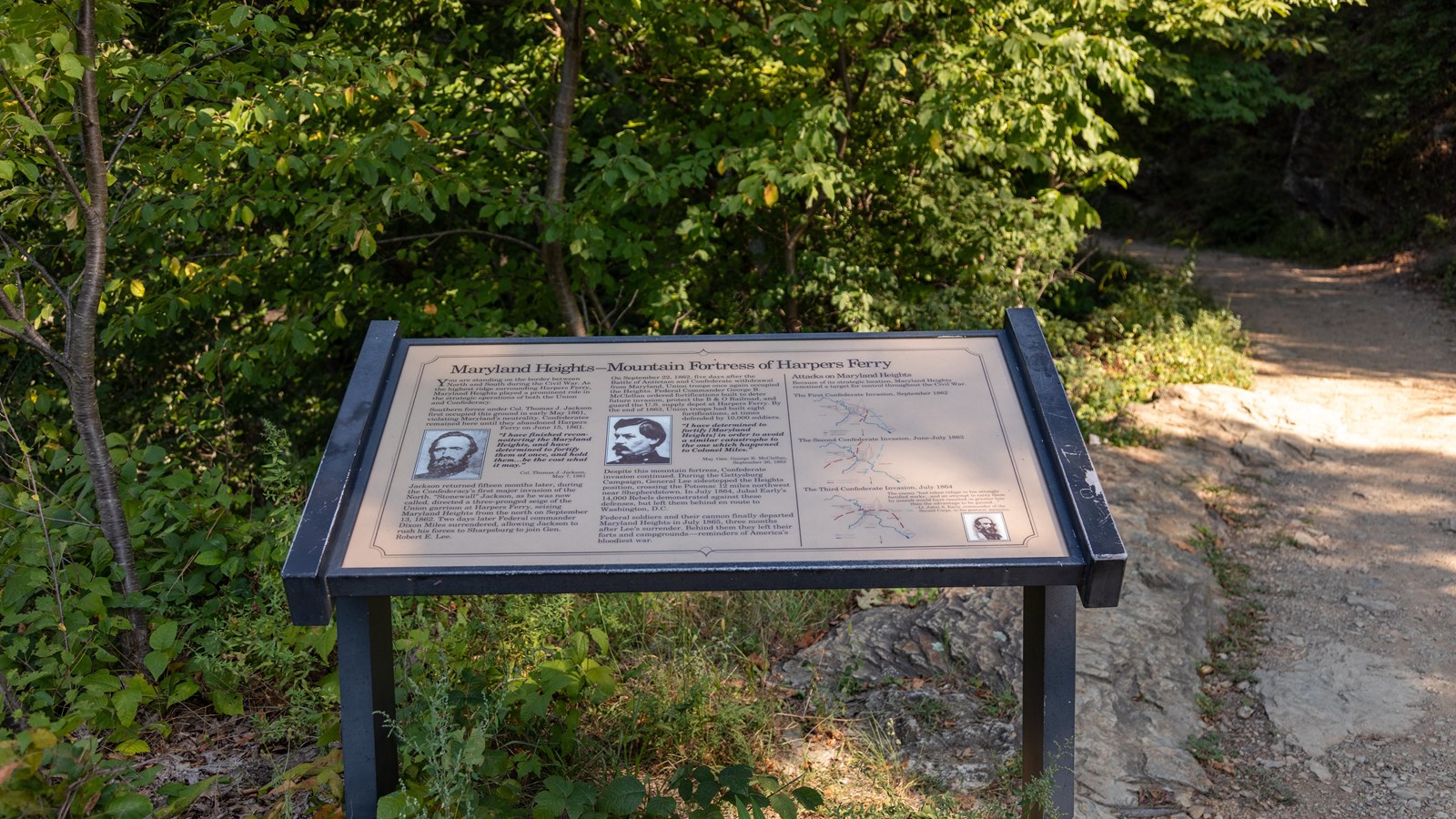Last updated: January 25, 2023
Place
Information Panel: Maryland Heights - Mountain Fortress of Harpers Ferry

NPS / Claire Hassler
Historical/Interpretive Information/Exhibits
You are standing on the border between North and South during the Civil War. As the highest ridge surrounding Harpers Ferry, Maryland Heights played a prominent role in the strategic operations of both the Union and Confederacy.
Southern forces under Col. Thomas J. Jackson first occupied this ground in early May 1861, violating Maryland's neutrality. Confederates remained here until they abandoned Harpers Ferry on June 15, 1861.
"I have finished reconnoitering the Maryland Heights, and have determined to fortify them at once, and hold them... be the cost what it may." - Col. Thomas J. Jackson, May 7, 1861.
Jackson returned fifteen months later, during the Confederacy's first major invasion of the North. "Stonewall" Jackson, as he was now called, directed a three-pronged siege of the Union garrison at Harpers Ferry, seizing Maryland Heights from the north on September 13, 1862. Two days later Federal commander Dixon Miles surrendered, allowing Jackson to rush his forces to Sharpsburg to join Gen. Robert E. Lee.
On September 22, 1862, five days after the Battle of Antietam and Confederate withdrawal from Maryland, Union troops once again occupied the Heights. Federal commander George B. McClellan ordered fortifications built to deter future invasion, protect the B&O Railroad, and guard the U.S. supply depot at Harpers Ferry. By the end of 1863, Union troops had built eight fortifications, at times defended by 10,000 soldiers.
"I have determined to fortify [MarylandHeights] in order to avoid a similar catastrophe to the one which happened to Colonel Miles." - Maj. Gen. George B. McClellan, September 26, 1862.
Despite this mountain fortress, Confederate invasion continued. During the Gettysburg Campaign, General Lee sidestepped the Heights position, crossing the Potomac 12 miles northwest near Shepherdstown. In July 1864, Jubal Early's 14,000 Rebels demonstrated against these defenses, but left them behind en route to Washington, D.C.
Federal soldiers and their cannon finally departed MarylandHeights in July 1865, three months after Lee's surrender. Behind them they left their forts and campgrounds - reminders of America's bloodiest war.
Attacks on Maryland Heights
Because of its strategic location, Maryland Heights remained a target for control throughout the Civil War.
Photo Caption: The enemy "had taken refuge in his strongly fortified works... and an attempt to carry them by assault would have resulted in greater loss than the advantage to be gained..." - Lt. Gen. Jubal A. Early, commander of the Second Corps, in his postwar memoirs.
